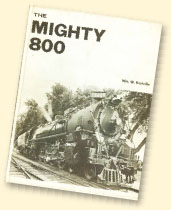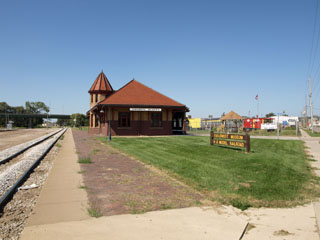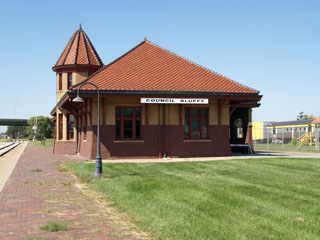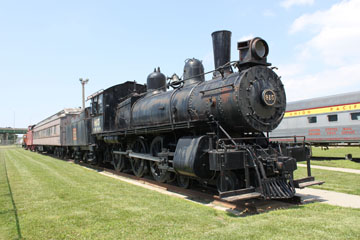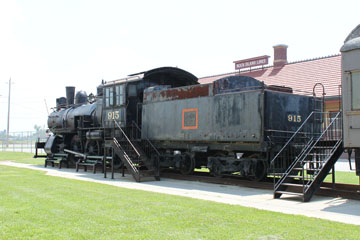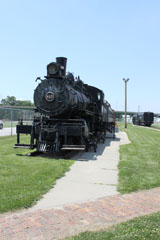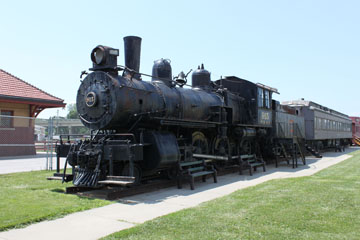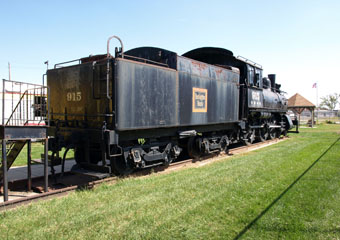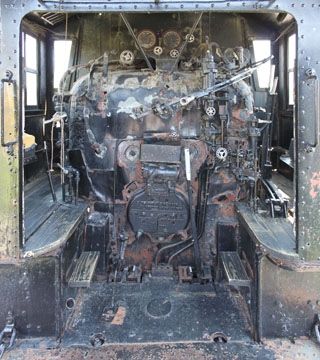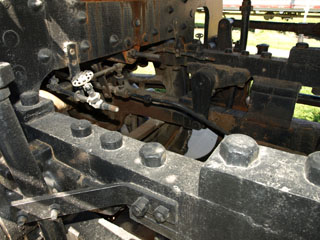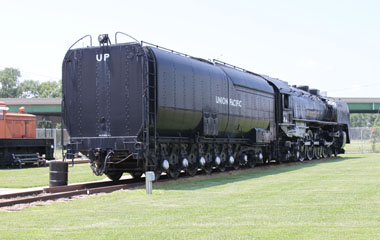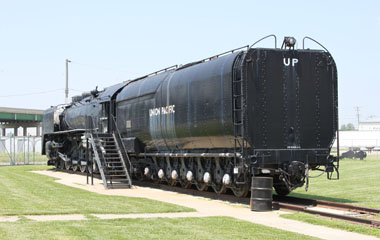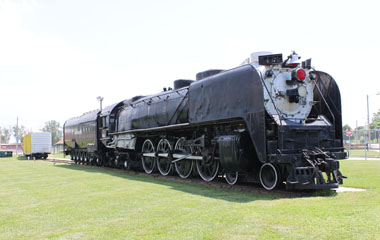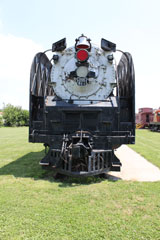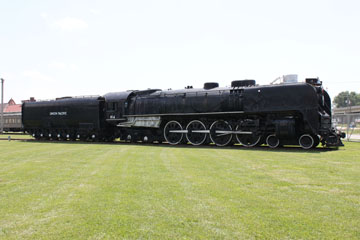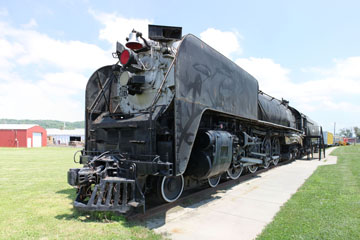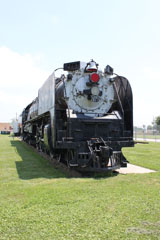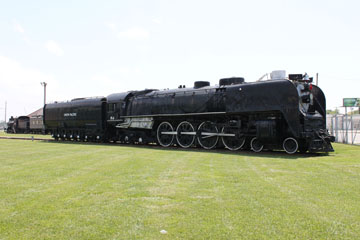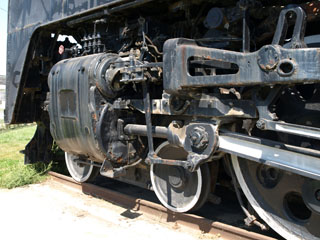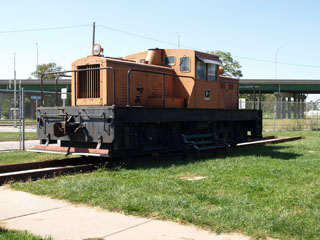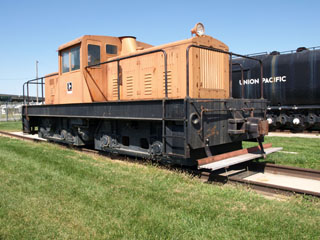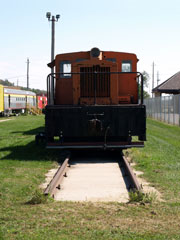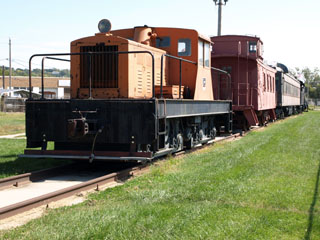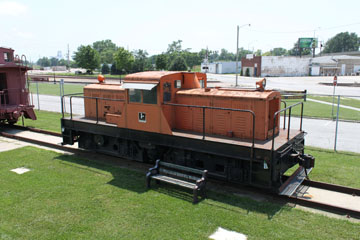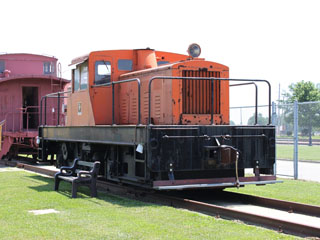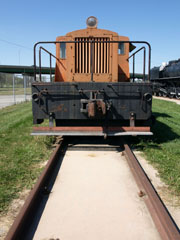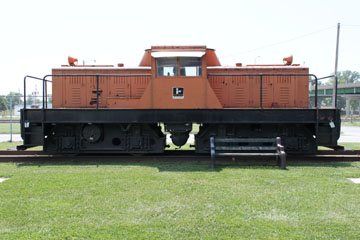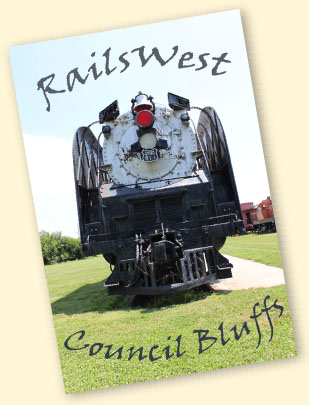

RailsWest Railroad Museum at 16th Avenue and South Main Street in Council Bluffs, IA, is operated by the Historical Society of Pottawattamie County. The Society was founded in 1934 as a non-profit organisation dedicated to kindling and keeping alive an active interest in state and local history. As well as the RailsWest Museum, it manages the Squirrel Cage Jail in downtown Council Bluffs.
The museum is open Saturdays 11am to 4pm during the winter season November-March, and Fridays & Saturdays 11am to 4pm and Sundays 1pm to 4pm from April to October 31st.

The depot also houses historical exhibits on the eight railroads that served Council Bluffs and on the Railway Mail Service.
Union Pacific #814 and Chicago, Burlington & Quincy #915 are on display in an enclosure next to the depot, along with a 1953 Plymouth Locomotive Works switcher, various cabooses, a lounge car, boxcar and Post Office car. The museum is also adjacent to tracks on the Union Pacific, BNSF and Iowa Interstate Railroad and has a fenced-in area for railfan viewing.
The ticket office, museum gift shop and a model railway layout is housed in an ex Rock Island Passenger Depot constructed in 1899 and originally located on the south edge of downtown Council Bluffs.
The Romanesque style building was designed by the architects Volk, John, & Co., and served a number of passenger trains over the ensuing years, including the Rocky Mountain Rocket, Midwest Hiawatha, the Arrow and Corn Belt Rocket before passenger services ceased in 1970.
The Chicago & North Western was the first railroad to arrive in Council Bluffs in 1867. Union Pacific's part of the transcontinental railroad was completed in 1869, with Council Bluffs at mile 0.0 (you can see a memorial in Council Bluffs on the Golden Spike Monument page of this website). Other railroads operating in the city include the Chicago Great Western, Wabash, Illinois Central and Milwaukee Road.
By the 1930s, Council Bluffs had become the nation's fifth largest rail centre.

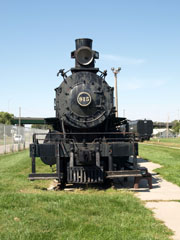

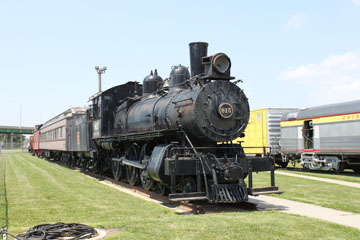
This 4-6-0 (Ten Wheeler type) was built as #44 in 1902 at the Burlington & Missouri Railroad's Havelock, IA, shops. Fourteen of these coal burning K-4 Class locomotives were built between 1900 and 1904 with 72" drivers for express service. #44 was one of several later converted to burn oil and fitted with 64" drivers for local and branch line work.
The B&MR was acquired by the CB&Q in 1872 and then served as a subsidiary until 1904 when it was finally consolidated into the CB&Q. #44 was then renumbered #715 and then in 1951 as #915. The K-4 class was gradually retired from service between 1931 and 1953, and #915 was donated to the City of Council Bluffs in 1965.
#915 weighs 156,600 lbs and operated at a boiler pressure of 200 psi delivering 22,161 lbs tractive effort. The relatively high ratio of its 30 sq ft grate and 172.3 sq ft firebox was partly the result of using a Belpaire firebox. It has 19" x 26" cylinders, with 10" piston valves aiding steam distribution.
The tender weighs 147,000 lbs empty with a 5,000 gallon water and 9 ton coal capacity.

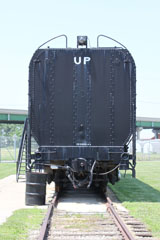

During the 1920s, railroads had to begin running scheduled trains in sections or put on extras to cope with increasing traffic as the locomotives in use could only haul about twelve cars. This prompted development of the "super power" locomotives, of which the 4-8-4 was the most numerous and widely used: thirty-six US railroads operated one thousand, one hundred and twenty-six of the type.
The Union Pacific ordered another fifteen 4-8-4s in 1939 designated Class FEF-2 (#820-#834). You can see #833, the sole survivor of this class on the Ogden Union Station page of this website.
Union Pacific #814 is the sole surviving FEF-1 ("FEF" stands for the locomotive's four-eight-four wheel arrangement). It was one of twenty ordered from Alco in 1937 (#800-#819).
The first 4-8-4 was built by Alco in 1926 for the Northern Pacific (#2600). Basically a 4-8-2 Mountain type modified to accommodate a large grate area and very deep firebox to burn the low grade bituminous coal produced by the Northern Pacific from its own mines, the wheel arrangement was initially dubbed "Northern Pacific" but was soon shortened to "Northern".
The final order of ten UP 4-8-4s, designated Class FEF-3, were delivered in 1944 (#835-#844). The last of these, #844, has been preserved as part of Union Pacific's Heritage Fleet and is headquartered in Cheyenne, WY. You can see it on the Cheyenne Roundhouse page of this website and steaming through North Platte Bailey Yard on the Golden Spike Tower page.
The FEFs saved UP about $300,000 p.a. in running costs and covered about 14,000 miles per month. Except for #844, which has never officially left service, all were retired between 1957 and 1962.
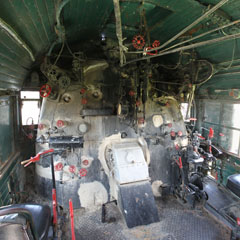
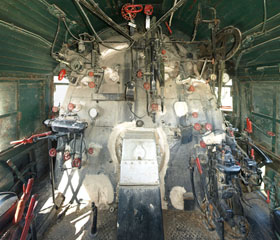
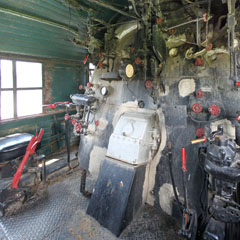
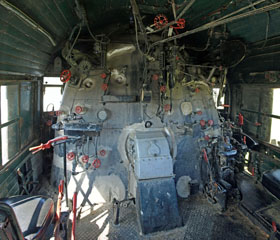
Above, views of #814's backhead. Built as a coal burner, like the other FEF-1s and FEF-2s, it was converted to burn oil following WWII. With a 100.2 sq ft grate, 442 sq ft firebox and total heating surface of 5,625 sq ft including 1,400 sq ft superheating, it operated at a boiler pressure of 300 psi delivering 63,610 lbs tractive effort.
The engine weighs 465,000 lbs, 270,000 lbs on its drivers, and the tender weighs 365,150 lbs. The locomotive was originally equipped with a twelve wheel tender carrying 50,000 lbs of coal and 20,000 gallons of water, but was later mated to a tender of the kind used on Union Pacific's Challengers and Big Boys. The larger, fourteen wheel (4 + 10) centipede truck tender weighed 421,550 lbs and had a capacity of 6,000 gallons of oil and 23,000 gallons of water.
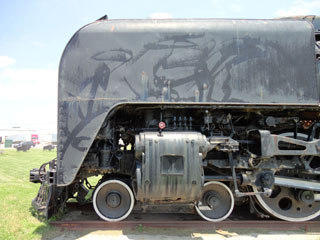
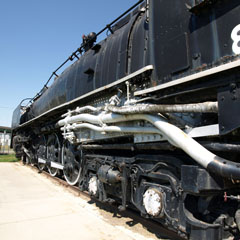
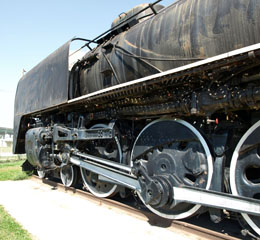
Above, the smoke deflectors or "elephants ears" on either side of the smokebox were introduced with the FEF-2 and retro fitted to the FEF-1s.
Below and right, the FEF-1 had smaller cylinders than the later FEF-2 and FEF-3, 24½" x 32" versus 25" x 32". It also had smaller drivers, 77" versus 80". All the FEF series were supplied with SKF leading and trailing truck roller bearings. The Boxpok driver axles were fitted with Timken roller bearings.

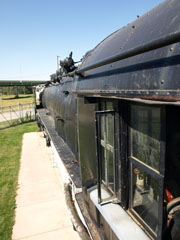
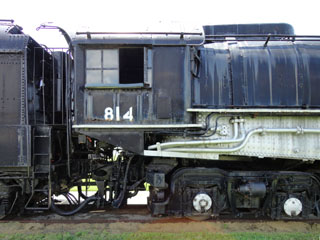
Related Links:
Location of RailsWest Railroad Museum
RailsWest Railroad Museum Website
Send a comment or query, or request permission to re-use an image.
William Kratville's The Mighty 800 published by Kratville Publications in 1967 charts the development, production and operation of UP's 800 series 4-8-4s (click on the cover to search for this book on Bookfinder.com).
